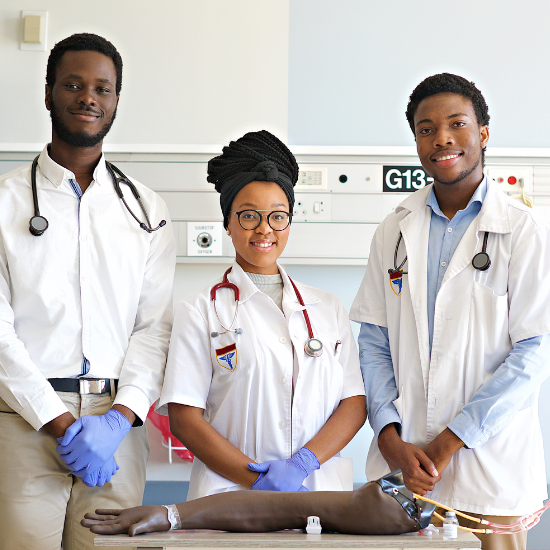Northeast Medical Institute - New Haven Campus Phlebotomy Course & Cna Class Fundamentals Explained
Northeast Medical Institute - New Haven Campus Phlebotomy Course & Cna Class Fundamentals Explained
Blog Article
The Of Northeast Medical Institute - New Haven Campus Phlebotomy Course & Cna Class
Table of ContentsAll about Northeast Medical Institute - New Haven Campus Phlebotomy Course & Cna ClassThe Best Strategy To Use For Northeast Medical Institute - New Haven Campus Phlebotomy Course & Cna ClassEverything about Northeast Medical Institute - New Haven Campus Phlebotomy Course & Cna ClassThe Best Guide To Northeast Medical Institute - New Haven Campus Phlebotomy Course & Cna ClassNortheast Medical Institute - New Haven Campus Phlebotomy Course & Cna Class Fundamentals ExplainedWhat Does Northeast Medical Institute - New Haven Campus Phlebotomy Course & Cna Class Do?
The usage of such tools need to be come with by various other infection prevention and control practices, and training in their use.For settings with reduced resources, price is a driving element in procurement of safety-engineered devices. Where safety-engineered tools are not offered, proficient usage of a needle and syringe is appropriate.
Among the crucial markers of quality of treatment in phlebotomy is the participation and cooperation of the person; this is equally valuable to both the wellness worker and the person. Clear info either written or verbal must be readily available to every client that undergoes phlebotomy. Annex F supplies example message for explaining the blood-sampling procedure to an individual. In the blood-sampling room for an outpatient division or center, supply a comfy reclining couch with an arm rest.
About Northeast Medical Institute - New Haven Campus Phlebotomy Course & Cna Class
Make sure that the indicators for blood tasting are clearly defined, either in a written protocol or in recorded instructions (e.g. in a laboratory kind). In any way times, comply with the methods for infection prevention and control listed in Table 2.2. Infection prevention and control techniques. Collect all the tools needed for the procedure and area it within secure and very easy reach on a tray or cart, ensuring that all the products are plainly noticeable.
Where the patient is grown-up and aware, follow the actions described listed below. Introduce on your own to the patient, and ask the person to specify their complete name. Inspect that the research laboratory type matches the client's identification (i.e. match the client's details with the research laboratory kind, to make certain accurate identification). Ask whether the license has allergic reactions, anxieties or has ever passed out throughout previous injections or blood draws.
Make the patient comfy in a supine position (if feasible). Location a clean paper or towel under the individual's arm. Review the examination to be performed (see Annex F) and get verbal permission. The client has a right to refuse a test at any moment before the blood tasting, so it is necessary to make certain that the person has recognized the procedure.
Some Known Details About Northeast Medical Institute - New Haven Campus Phlebotomy Course & Cna Class
Expand the person's arm and evaluate the antecubital fossa or lower arm. Locate a blood vessel of a good dimension that is visible, straight and clear. The diagram in Section 2.3, shows common placements of the vessels, however numerous variations are possible. The median cubital vein exists between muscles and is normally one of the most easy to pierce.
DO NOT place the needle where veins are diverting, since this increases the chance of a haematoma. The vein needs to show up without using the tourniquet. Situating the capillary will certainly help in identifying the right size of needle. Use the tourniquet concerning 45 finger widths over the venepuncture site and re-examine the capillary.
Samplings from main lines carry a threat of contamination or wrong research laboratory test results. It is acceptable, but not suitable, to draw blood samplings when first introducing an in-dwelling venous tool, prior to linking the cannula to the intravenous fluids.
The Of Northeast Medical Institute - New Haven Campus Phlebotomy Course & Cna Class
Permit the area to dry. Failing to allow adequate contact time raises the risk of contamination. DO NOT touch the cleaned site; in specific, DO NOT place a finger over the capillary to lead the shaft of the exposed needle. It the site is touched, repeat the sanitation. Perform venepuncture as adheres to.
Ask the patient to form a fist so the veins are a lot more noticeable. Go into the blood vessel swiftly at a 30 degree angle or much less, and remain to introduce the needle along the capillary at the easiest angle of entrance - PCT Training. Once sufficient blood has been gathered, launch the tourniquet prior to taking out the needle
Northeast Medical Institute - New Haven Campus Phlebotomy Course & Cna Class - The Facts
Withdraw the needle gently and apply gentle stress to the site with a clean gauze or dry cotton-wool round. Ask the person to hold the gauze or cotton wool in position, with the arm expanded and increased. Ask the client NOT to bend the arm, due to the fact that doing so triggers a haematoma.

Things about Northeast Medical Institute - New Haven Campus Phlebotomy Course & Cna Class
Do not push the syringe plunger because additional stress raises the danger of haemolysis. Where feasible, keep the tubes in a shelf and move the rack towards you. Infuse downwards right into the ideal coloured stopper. DO NOT remove the stopper since it will certainly release the vacuum. If the sample tube does not have a rubber stopper, infuse incredibly gradually into television as minimizing the pressure and speed utilized to move the sampling reduces the danger of haemolysis.

Report this page